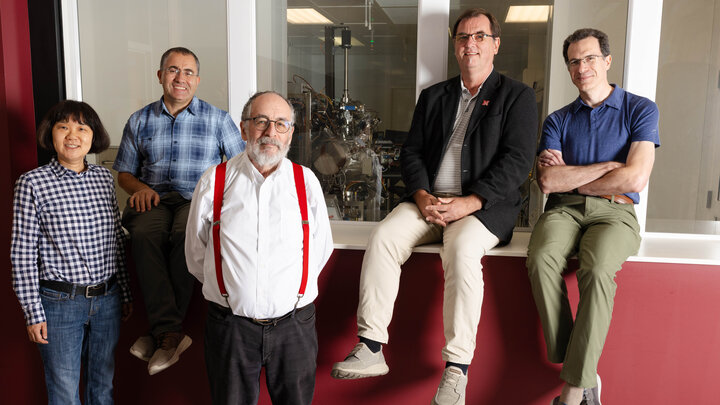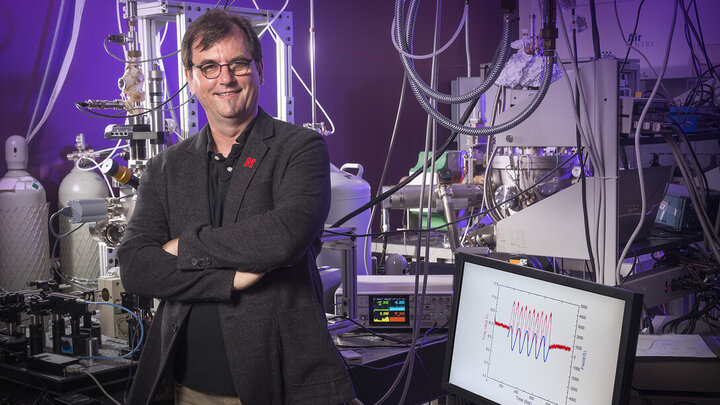Alexei Gruverman, Charles Bessey Professor in the Department of Physics and Astronomy, and Alexey Lipatov, research assistant professor in the Department of Chemistry, have earned an Energy Research Grant from the Nebraska Center for Energy Sciences Research.
They are co-Principal Investigators of "Strain-engineering enhancement of energy efficiency of solar cells based on organic halide perovskites."
Gruverman leads the Gruverman Group, whose research focuses on fundamental studies of nanoscale physical phenomena in electronic and polar materials by means of scanning probe microscopy (SPM) techniques. Lipatov is a material scientist, focused on exploration of properties and applications of low-dimensional materials like graphene, GO, MoS2, TiS3, and MXenes.
"Critical for the success of this project is mutually complementing interdisciplinary expertise of PIs in fabrication of high-quality OHP materials and optoelectronic devices (Lipatov) and nanoscale characterization of the photovoltaic properties of a wide range of materials systems including OHP (Gruverman)," according to the abstract.
The NCESR is a collaboration between the Nebraska Public Power District (NPPD) and the university established to conduct research on renewable energy sources, energy efficiency and energy conservation; and to expand economic opportunities and improve quality of life for Nebraska and the nation.
Abstract
This proposal seeks to exploit strain engineering to significantly enhance energy efficiency of the solar cells based on organic halide perovskites (OHP). Development of efficient photovoltaic (PV) solar cells is one of the most scientifically and technologically important goals of the research community, which may bring out broad societal and environmental implications. OHP materials are surging in this quest as a likely replacement for silicon as the solar cell material due to their low-cost fabrication, excellent crystallinity and appealing PV properties. One of the mechanisms explaining this superior PV behavior is the electric polarization, which promotes efficient separation and migration of the photo-induced charges. The goal of this project is to investigate, both at the macro- and nanoscopic level, the enhancement of energy efficiency of the OHP materials by employing a universal coupling between an inhomogeneous mechanical strain and induced polarization.
Critical for the success of this project is mutually complementing interdisciplinary expertise of PIs in fabrication of high-quality OHP materials and optoelectronic devices (Lipatov) and nanoscale characterization of the photovoltaic properties of a wide range of materials systems including OHP (Gruverman). The PIs have an impressive track record of collaboration reflected in over 10 joint publications in high-impact journals. Enhancement of the PV effect via the strain engineering will result in disruptive innovation of the OHP-based solar cell technology by boosting the solar energy conversion efficiency. More importantly, this project will allow tapping into not one but two sources of clean energy - solar and mechanical energy - paving the way for renewable energy generation in Nebraska, the nation and the world. Successful implementation of this research will provide a basis for attracting new funding from federal agencies (NSF, DARPA, NREL, DOE) and from semiconductor companies involved in development of solar cell technologies (ESA Renewables, Sun Power).




